As an avid ice skater, I’ve learned that maintaining your blades is crucial for peak performance. Today, I’m focusing on an often overlooked but essential accessory: ice skate soakers.
These simple fabric covers play a vital role in preserving your skate blades and, by extension, your performance on the ice.
The Science Behind Soakers
Ice skate soakers are engineered to protect your skates from moisture and rust, two major threats to blade longevity. Let’s examine how they work:
Moisture Absorption
The primary function of soakers is to absorb residual moisture from your blades after use. Unlike hard plastic guards, which can trap moisture against the blade, soakers are made from absorbent materials like terrycloth or microfiber.
These fabrics wick away moisture, allowing it to evaporate safely.
Rust Prevention
By removing moisture, soakers play a crucial role in preventing rust formation. Rust can dull your blade’s edge and, in severe cases, compromise the structural integrity of the blade itself.
Regular use of soakers can significantly extend the life of your skates.
Material Matters
The effectiveness of soakers largely depends on the materials used in their construction. While traditional terrycloth soakers have been the go-to for decades, recent advancements have introduced more effective materials.
A 2018 study from the University of Minnesota found that microfiber soakers were 25% more effective at moisture absorption than their terrycloth counterparts. This increased efficiency translates to better protection for your blades and potentially longer-lasting skates.
Terrycloth Soakers
Terrycloth has been a popular choice for soakers because of it’s high absorbency and soft texture. The looped fibers in terrycloth create a large surface area for moisture absorption, making it effective at quickly drawing water away from the blade.
Pros of Terrycloth Soakers:
- Highly absorbent
- Soft and gentle on blades
- Affordable and widely available
Cons of Terrycloth Soakers:
- May wear out faster than some synthetic choices
- Can be bulky, especially when wet
Microfiber Soakers
Microfiber soakers represent the latest advancement in blade care technology. These synthetic fibers are incredibly fine, allowing for a higher density of moisture-wicking material in a smaller space.
Pros of Microfiber Soakers:
- Superior moisture absorption compared to terrycloth
- Quick-drying properties
- Durable and long-lasting
- Thinner profile for easier storage
Cons of Microfiber Soakers:
- Generally more expensive than terrycloth options
- May not feel as soft to the touch
Hybrid Materials
Some manufacturers have begun producing soakers that mix many materials to maximize benefits. For example, a soaker might use microfiber for the interior lining with a terrycloth exterior for added absorption and a softer feel.
Implementing Soakers in Your Skate Care Routine
Now that we understand the importance of soakers, let’s look at how to incorporate them into your skate maintenance routine:
1. Post-Skate Care
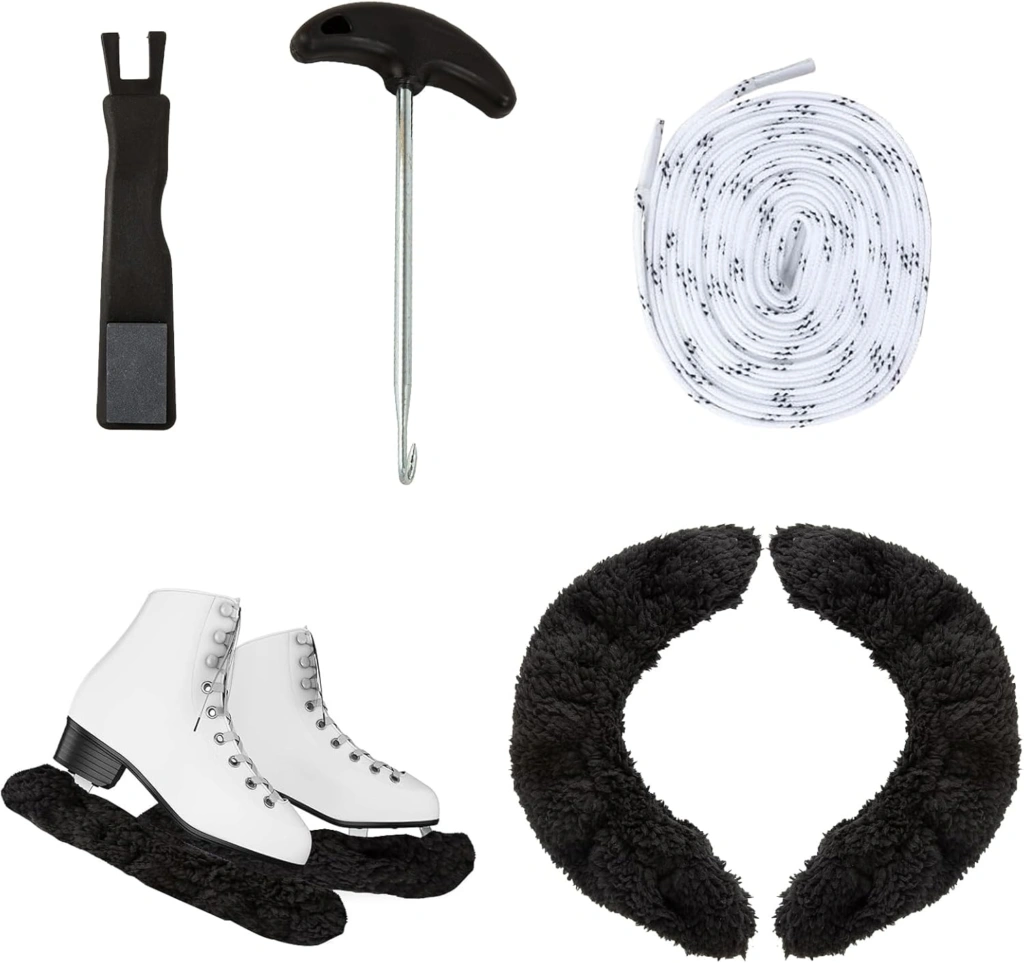
Immediately after skating, wipe down your blades with a clean, dry cloth to remove any visible moisture or debris. This initial step helps prevent water spots and removes any small particles that could potentially scratch your blades.
2. Apply Soakers
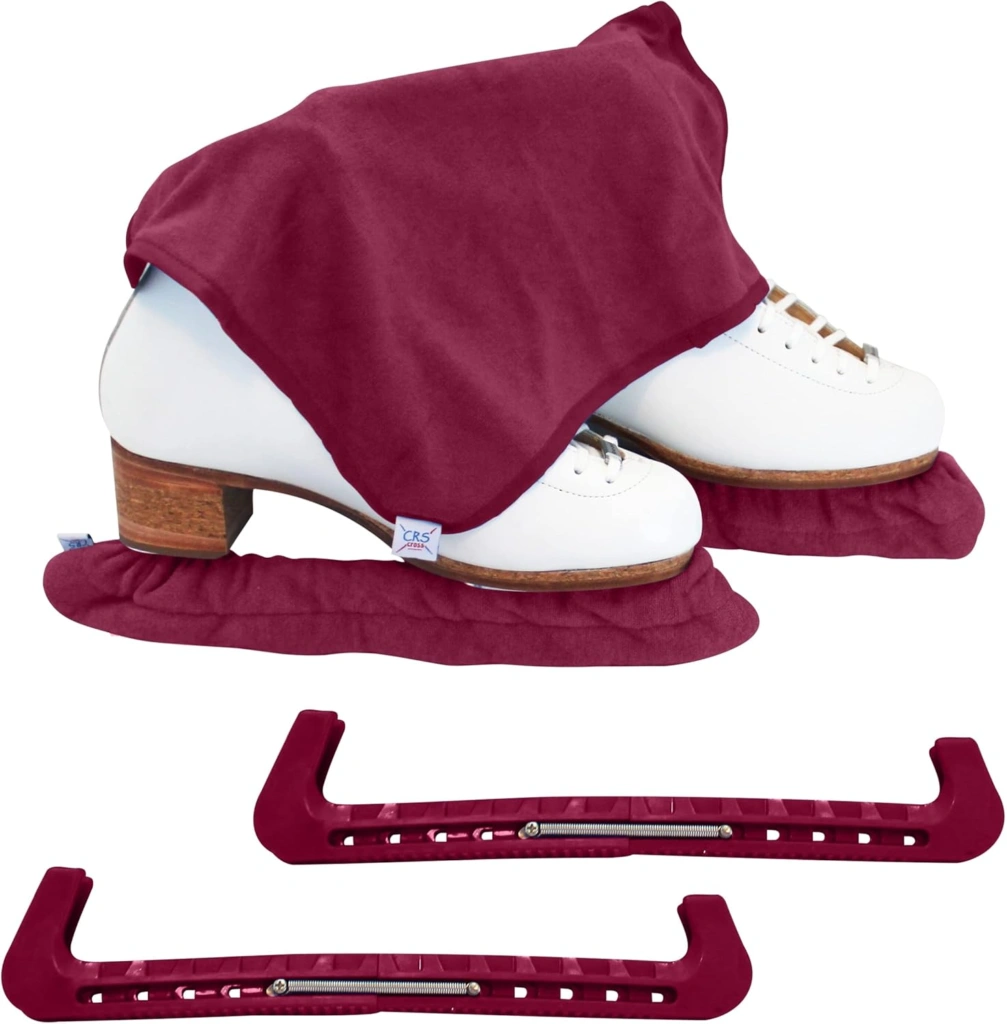
Once you’ve wiped down your blades, it’s time to apply the soakers. Slide them onto your blades while they’re still cool.
Avoid putting soakers on warm blades, as this can create condensation inside the soaker, defeating it’s purpose.
3. Storage
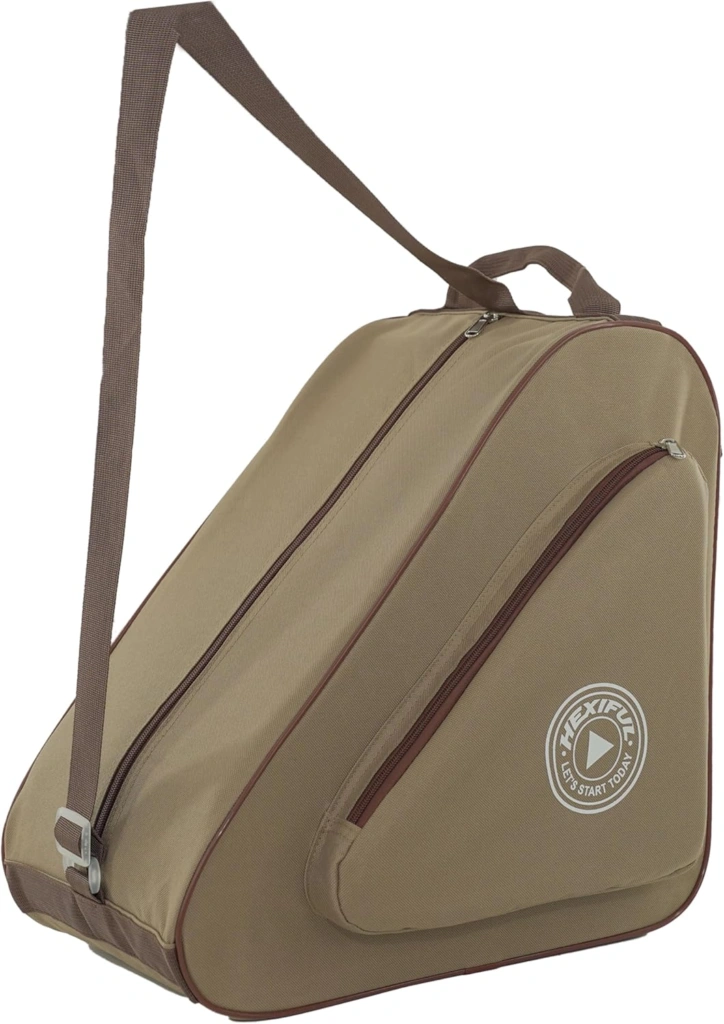
Store your skates in a well-ventilated area, preferably outside of your skate bag, to allow for most air circulation. If you must store them in a bag, consider using a mesh or breathable bag designed for skates.
4. Rotation
If you skate often, consider having many pairs of soakers. This allows you to always have a dry pair ready while others are being washed or are drying out.
Rotating your soakers confirms that you’re always using a clean, dry pair for optimal moisture absorption.
5. Regular Cleaning
Wash your soakers regularly to prevent the buildup of bacteria and mold. Most can be machine washed, but always check the care instructions.
Some high-performance soakers may need special care to maintain their moisture-wicking properties.
Pro Tip: Color-code your soakers to easily identify your skates in a crowded rink or locker room. This small detail can save you time and prevent mix-ups with other skaters’ equipment.
Common Pitfalls and How to Avoid Them
Even with the best intentions, skaters can make mistakes in their soaker use. Here are some common issues and how to address them:
Trapped Moisture
Problem: Putting soakers on damp blades can trap moisture against the steel, potentially leading to rust or corrosion.
Solution: Always dry your blades thoroughly before applying soakers. Use a clean, absorbent cloth to wipe down the entire blade, paying special attention to the edges and any crevices where moisture might hide.
Forgotten Soakers
Problem: Leaving soakers on for extended periods can lead to rust if any moisture is present, especially in humid environments.
Solution: Remove soakers periodically to check blade condition and allow for air drying. Establish a routine where you remove the soakers and inspect your blades at least once a week, even during off-seasons.
Improper Fit
Problem: I’ll-fitting soakers may not cover the entire blade, leaving parts exposed to moisture and potential damage.
Solution: Ensure you’re using the fix size soaker for your blade length and type. Many manufacturers offer size guides, so measure your blades and choose accordingly.
For custom or unusually sized blades, consider having soakers made to fit.
Material Breakdown
Problem: Over time, soakers can wear out, becoming less effective at moisture absorption. This degradation can happen faster with frequent use or improper care.
Solution: Replace your soakers regularly, especially if you notice they’re not drying as quickly or feel less absorbent. Keep an eye out for signs of wear such as thinning fabric, holes, or a change in texture.
As a general rule, consider replacing your soakers every season if you skate often.
Adapting Soaker Use for Different Skating Disciplines
While the basic principle of soaker use remains the same across skating disciplines, there are some nuances to consider:
Figure Skating
Figure skaters often have more elaborate blade designs, including toe picks. Look for soakers specifically designed for figure skates to ensure full coverage.
These soakers typically have a reinforced toe area to accommodate the pick without wearing through quickly.
Figure skating soakers might also come in longer lengths to cover the full blade, including the extended tail that many figure skates feature. Some high-end options even include separate compartments for the blade and toe pick, providing customized protection.
Hockey
Hockey players may prefer more durable soakers because of the high-impact nature of the sport. Some hockey-specific soakers come with reinforced areas to withstand the rigors of frequent use and the potentially rougher handling that comes with the fast-paced nature of hockey.
Look for soakers made with extra-strong stitching and possibly reinforced edges. Some hockey soakers also feature a more streamlined design to fit easily in gear bags without adding bulk.
Speed Skating
Speed skaters need longer soakers to accommodate their extended blades. Some speed skating soakers come with extra features like built-in sharpening stone holders or specialized pockets for storing small tools.
Due to the precision required in speed skating, these soakers often have a very snug fit to ensure no part of the blade is left exposed. They might also be made of materials that offer minimal friction, allowing skaters to slide them on and off quickly during competitions.
Advanced Soaker Technology
As skating technology evolves, so do soakers. Here are some cutting-edge developments to watch:
Antimicrobial Treatments
Some manufacturers now offer soakers with antimicrobial properties, helping to control odor and prevent bacterial growth. These treatments can be particularly useful for skaters who train often or in warm environments where bacteria thrive.
Antimicrobial soakers use various technologies, from silver-infused fibers to specialized chemical treatments. While they don’t replace the need for regular cleaning, they can help maintain a more hygienic environment for your blades between washes.
Quick-Dry Technology
Advanced fabrics and designs are being developed to speed up the drying process, reducing the risk of trapped moisture. These quick-dry soakers often use a combination of highly absorbent inner layers and moisture-wicking outer layers to pull moisture away from the blade and allow it to evaporate more quickly.
Some designs incorporate ventilation channels or mesh panels to further enhance airflow and speed up drying times. This technology can be particularly useful for skaters who have many training sessions in a single day.
Eco-Friendly Options
In response to growing environmental concerns, some companies are producing soakers made from recycled materials or sustainable fabrics. These eco-friendly options often use materials like recycled polyester from plastic bottles or organic cotton.
Some manufacturers are even exploring biodegradable options for soakers, ensuring that when they do eventually wear out, they have a minimal environmental impact. While these options may currently come at a premium, they offer a way for environmentally conscious skaters to reduce their impact.
Temperature-Regulating Materials
Emerging technologies in fabric science have led to the development of temperature-regulating materials. These advanced fabrics can help maintain a consistent temperature around your blades, potentially reducing condensation in varying environmental conditions.
Some of these materials use phase-change technology, which can absorb excess heat when your blades are warm and release it when they cool down, helping to maintain a more stable environment inside the soaker.
Exercises to Reinforce Proper Soaker Use
To help you incorporate soakers into your routine effectively, try these exercises:
Timed Drying Exercise
After skating, time how long it takes for your blades to dry completely before applying soakers. This exercise will help you understand your skates’ drying needs and prevent you from applying soakers too soon.
- After your skating session, wipe down your blades thoroughly with a clean, dry cloth.
- Set a timer and check your blades every 5 minutes, gently touching them to feel for any remaining moisture.
- Record the total time it takes for your blades to feel completely dry to the touch.
- Repeat this process under different conditions (e.g., after a light practice vs. an intense session, or on humid days vs. dry days) to get a comprehensive understanding of your blades’ drying patterns.
Soaker Inspection Routine
Once a week, closely examine your soakers for signs of wear, discoloration, or odor. This will help you determine when it’s time for a replacement and ensure you’re always using effective soakers.
- Remove your soakers and lay them flat on a clean, well-lit surface.
- Visually inspect the exterior for any signs of wear, such as thinning fabric, holes, or loose threads.
- Turn the soakers inside out and check the interior for any discoloration, which could indicate trapped moisture or mold growth.
- Gently squeeze the soakers to check for any change in texture or absorbency.
- Give them a quick smell test – any musty or unpleasant odors could indicate it’s time for a wash or replacement.
Blade Comparison Study
If you have many pairs of skates, use soakers on one pair and not on the other. After a month, compare the blade condition to see the difference soakers make.
- Select two pairs of skates that you use with similar frequency and for similar activities.
- Use soakers consistently on one pair after each use, following all the best practices we’ve discussed.
- For the other pair, simply wipe them down and store them without soakers (but still in a dry, ventilated area).
- After one month, carefully examine both pairs of blades.
Look for:
- Any signs of rust or corrosion
- The sharpness of the edges
- The overall appearance of the blade surface
- Document your findings, noting any differences in blade condition between the two pairs.
This exercise can provide a powerful visual demonstration of the impact soakers have on blade preservation.
Customizing Your Soaker Routine
While the basic principles of soaker use apply to all skaters, you may find that you need to adjust your routine based on your specific circumstances. Here are some factors to consider when customizing your approach:
Climate Considerations
If you live in a humid environment, you may need to be extra vigilant about moisture control. Consider using dehumidifiers in your storage area and possibly investing in soakers with enhanced moisture-wicking properties.
In very dry climates, you might find that your blades dry more quickly, but be cautious of over-drying, which can potentially lead to blade warping in extreme cases. Balanced moisture management is key.
Frequency of Use
Competitive skaters or those who train daily will naturally put more wear and tear on their soakers. If you fall into this category, consider rotating between many pairs of soakers and replacing them more often.
For occasional skaters, while you may not need to replace soakers as often, be sure to check them regularly for any signs of degradation, especially if they’re stored for long periods between uses.
Travel Considerations
If you often travel for competitions or training camps, consider how you’ll manage your soaker routine on the go. Travel-specific soakers that are more compact or quick-drying can be a good investment.
Always pack an extra pair of soakers when traveling, and be prepared to adjust your routine based on the facilities available at your destination.
The Economic Argument for Soakers
While some skaters may balk at the extra cost of quality soakers, it’s important to consider the long-term economic benefits:
Blade Longevity
By protecting your blades from rust and corrosion, soakers can significantly extend the life of your skates. Given the high cost of quality skating blades, this protection can translate to substantial savings over time.
Reduced Sharpening Frequency
Well-maintained blades may need less frequent sharpening, saving you both time and money. While proper soaker use won’t eliminate the need for regular sharpening, it can help maintain your blade’s edge for longer periods.
Injury Prevention
Skating on well-maintained blades can contribute to better performance and potentially reduce the risk of injuries caused by unexpected blade issues. While difficult to quantify, the potential savings in medical costs and lost training time can be significant.
Soaker Care and Maintenance
To ensure your soakers continue to perform effectively, proper care is essential:
Washing Instructions
Most soakers can be machine washed, but always check the manufacturer’s instructions first. Use a gentle cycle with cold water and a mild detergent.
Avoid using fabric softeners, as they can reduce the absorbency of the material.
Drying Methods
Air drying is typically the best method for soakers. Hang them in a well-ventilated area away from direct sunlight, which can degrade some materials over time.
If you must use a dryer, use the lowest heat setting possible.
Storage Between Uses
When not in use, store your soakers in a dry, clean area. Consider using a breathable bag or container to prevent dust accumulation while still allowing air circulation.
The Future of Soaker Technology
As materials science and textile engineering continue to advance, we can expect to see further innovations in soaker technology:
Smart Soakers
Future soakers might incorporate smart technology, such as moisture sensors that alert you when it’s time to change or dry your soakers. This could help improve your blade care routine and prevent over-or under-use of soakers.
Nanotechnology Integration
Advancements in nanotechnology could lead to soakers with enhanced moisture-wicking and antimicrobial properties at the molecular level. This could result in more effective and longer-lasting soakers.
Customization and 3D Printing
As 3D printing technology becomes more accessible, we might see a trend towards custom-printed soakers that perfectly fit person blade profiles. This could offer unparalleled protection and fit for skaters of all disciplines.
Frequently Asked Questions
What are ice skate soakers?
Ice skate soakers are fabric covers designed to protect ice skate blades from moisture and rust when not in use. They absorb residual moisture and help prevent corrosion, extending the life of the blades.
How often should I replace my ice skate soakers?
The frequency of replacement depends on usage, but generally, you should replace your soakers every season if you skate regularly. Look for signs of wear such as thinning fabric, decreased absorbency, or persistent odors.
Can I use the same soakers for figure skates and hockey skates?
While you can use generic soakers for both, it’s better to use discipline-specific soakers. Figure skate soakers are designed to accommodate toe picks, while hockey skate soakers may be more durable for the demands of the sport.
Are microfiber soakers better than terrycloth?
Microfiber soakers are generally more effective at moisture absorption and dry faster than terrycloth. However, both materials can be effective if used properly.
The choice often comes down to personal preference and budget.
How do I clean my ice skate soakers?
Most soakers can be machine washed in cold water with mild detergent. Avoid using fabric softeners as they can reduce absorbency.
Air dry or use a low heat setting in the dryer.
Always check the manufacturer’s care instructions.
Can soakers prevent rust on ice skate blades?
Soakers help prevent rust by absorbing moisture from the blades. However, they are most effective when used in conjunction with proper blade drying techniques and regular maintenance.
Should I use soakers if I store my skates in a dehumidified area?
Yes, using soakers is still useful even in a dehumidified area. They provide an extra layer of protection against any residual moisture and can help maintain the blade’s condition.
How long should I wait after skating before putting on soakers?
Wait until your blades are completely dry before applying soakers. This typically takes 10-15 minutes, but can vary based on environmental conditions and how much you’ve skated.
Can I use soakers on newly sharpened blades?
Yes, you can use soakers on newly sharpened blades. In fact, it’s important to protect freshly sharpened edges from moisture to maintain their sharpness.
Do professional skaters use soakers?
Many professional skaters use soakers as part of their equipment maintenance routine. They understand the importance of blade care in maintaining peak performance and longevity of their skates.
Key Takeaways
- Soakers are essential for preventing moisture damage and rust on skate blades.
- Choose the right material and fit for your specific skating needs, considering factors like your discipline and frequency of use.
- Incorporate soaker use into your post-skating routine for most benefit, ensuring blades are dry before application.
- Regularly clean and replace your soakers to maintain their effectiveness and prevent bacterial growth.
- Stay informed about new soaker technologies to improve your blade care and potentially enhance your skating performance.
Affiliate Disclaimer: SkateNavigator.com may include affiliate links, which allow us to earn a small commission when you make a purchase through them. This helps support our site at no extra cost to you. Thank you for your support!
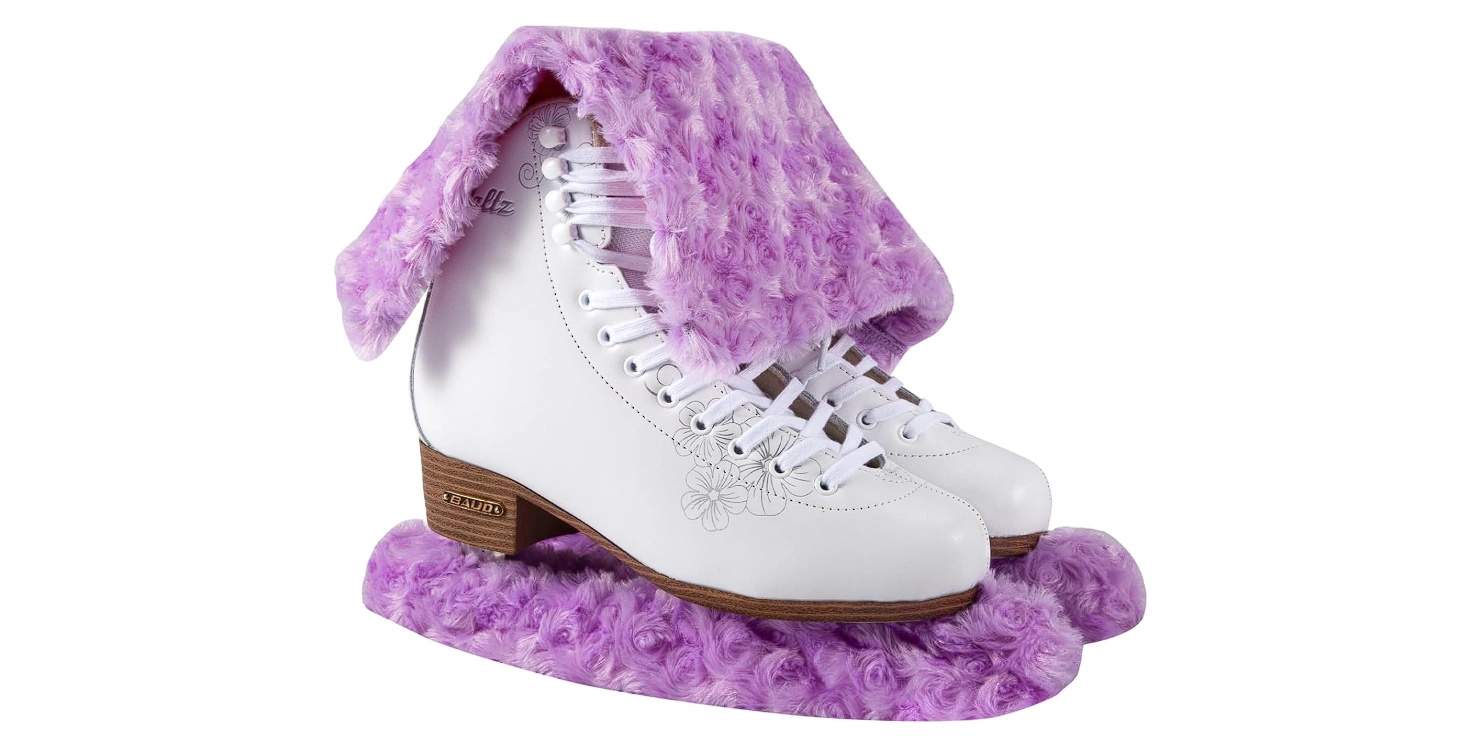

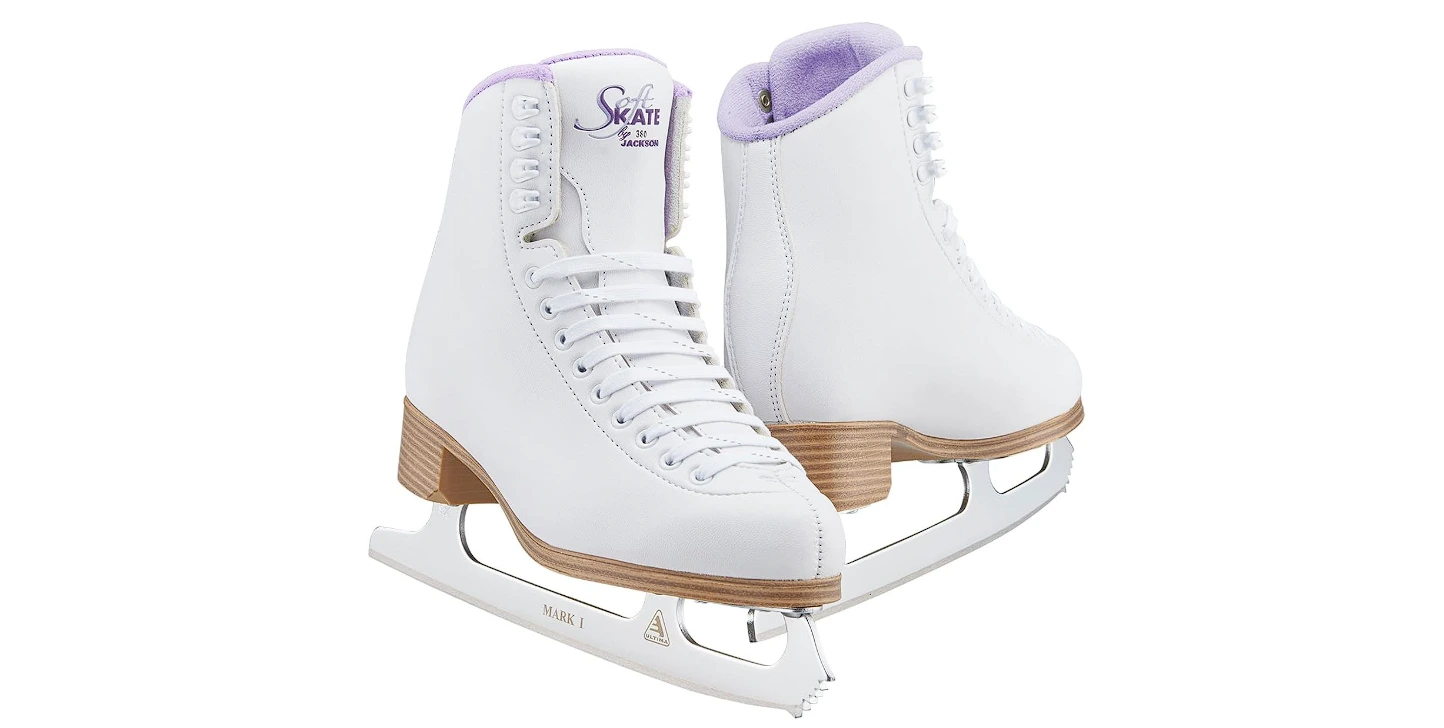
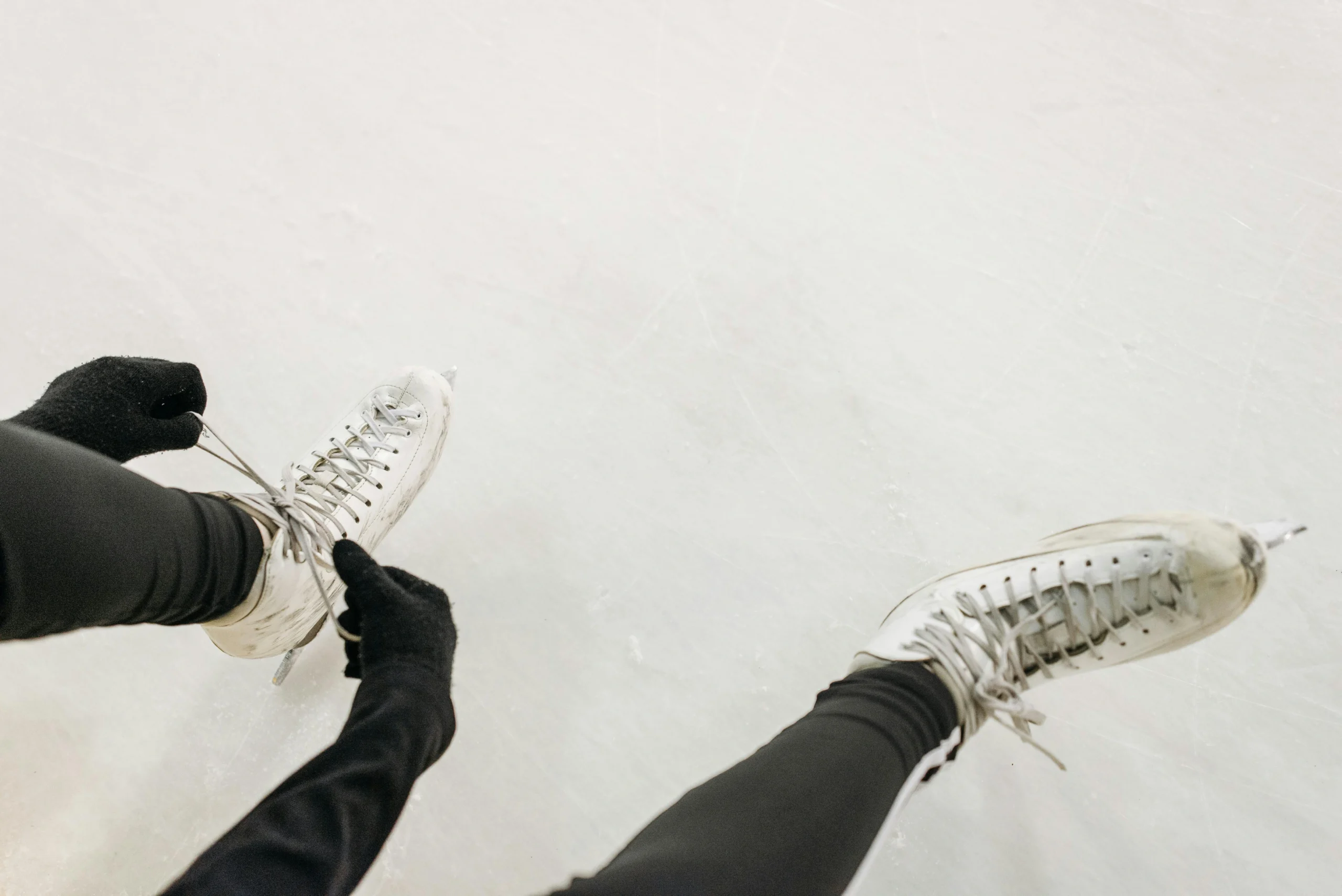
0 Comments